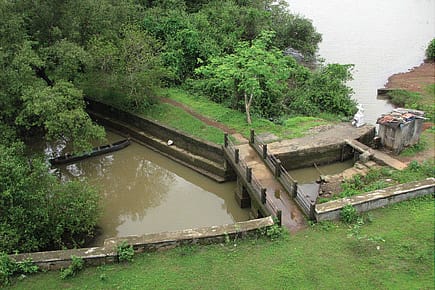How Goa Became Livable

A 2,000-year-old practice of reclaiming land from the sea still continues
Everyone loves Goa for its sea, but few know how hard its people have tried to get rid of it, or at least a part of it. About 2,000 years ago, habitation in Goa was close to impossible, for, when the tide rose, large sections of land would get submerged. To make the land habitable, people found a unique system for sustainable living—khazans.
Khazans are low-lying coastal lands that have been reclaimed from marshy mangroves by the construction of embankments. The floodplains along Goa's tidal estuaries have been reclaimed over centuries by an intricate system of dykes and sluice gates. The most important aspect of this system is knowledge of the tidal clock.
The structure is made according to the balanced availability of fresh and saline water. Too much fresh water causes undesirable weeds and over-vegetation, leading to eutrophication. And surplus saline water flow makes the land useless for agriculture. It's a well-calculated system that allows for agriculture, seasoned fishing, the formation of manos and galoi (lakes and rivulets), and a balanced inflow of water to the land.
Even now, despite modern techniques, Goans maintain this system for their livelihood. The village communidade (panchayat) takes on the responsibility. "The khazan lands are above sea level and are separated by bunds. The village communidade takes care of these bunds and remakes them every year using clay and hay. This land is very fertile and good for cultivating crops. It is also very good for fishing near the sluice gates where the manos are. To raise money for the bunds, the communidade auctions off the sluice gates and gives it on lease for one year to the highest bidder," says Savio Figueiredo, member of the Aldona communidade.
2025 In Review
12 Dec 2025 - Vol 04 | Issue 51
Words and scenes in retrospect
Goans have local myths, too, to explain this reclamation. One of them links it to Parashuram, one of Vishnu's incarnations. According to the myth, Parashuram shot an arrow into the sea, which then receded, allowing people to use the land. The common saying is "Parashuram marlo bann", which translates to 'Parashuram shot an arrow'. Intriguingly, it can also be heard as "Parashuram marlo bandh", which translates to 'Parashuram built a dyke'.
